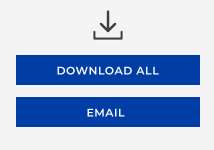According to the latest RE/MAX National Housing Report, homes sold in an average of just 10 days in Cincinnati and Nashville, and a short 13 days in Omaha, Nebraska. Year over year, the average Days on Market – the number of days between when a home is first listed in an MLS and a sales contract is signed – was down 18 days from the average in August 2020, coming in at 24 days for the month. This metric, one of the four primary housing metrics measured by the RE/MAX National Housing Report, is one example showing just how active this housing market remains, even with an anticipated seasonal decline in sales in tow.
Other metrics measured in the report, including Closed Transactions (home sales) and Months Supply of Inventory (available housing supply) point to a still-frenzied market. In August, Months Supply of Inventory was 1.3, down from July’s 1.5 and significantly less than August 2020’s 1.9. And even with a dip in month-over-month home sales, August home sales were one of the largest totals of any month in the 13-year history of the report and the second-largest for the month. Year over year, sales were up 0.6%.
Nick Bailey, President of RE/MAX, LLC, asserts now might be an optimal time for people to get in the game as prices took a slight dip since July and relief on housing supply may still be off in the distance.
“The slight seasonal decline in home sales from July to August was countered by this being the second-highest August sales total in the 13-year history of our report. So, although we appear to be past the blistering summer peak, the market is still very active,” Bailey says. “In fact, the drop in home prices might signal to potential sellers that it’s time to get off the fence in case they fall further, which in turn could draw more buyers back into the mix. In any case, it seems likely that the combination of super-quick sales and a severe lack of inventory will be with us for the foreseeable future.”
In fact, five markets reported just 0.6 Months Supply of Inventory in August 2021. For context, a six months supply indicates a market balanced equally between buyers and sellers. The five-way tie was among Seattle, Albuquerque, Denver, Charlotte and Raleigh-Durham.
If you’re looking to buy or sell, on the fence about either or just curious about how the seasonal transition may affect the housing market, here’s the need-to-know data in the latest RE/MAX National Housing Report:
1. Home Sales Dipped from July but Saw a Year-Over-Year Increase
Of the 51 metro areas surveyed in August 2021, the overall average number of home sales is down 3.5% compared to July 2021, and up 0.6% compared to August 2020. Leading the year-over-year sales percentage increase were New York, NY at +55.1%, Honolulu, HI at +37.3%, and Las Vegas, NV at +12.5%.
2. Home Prices Also Dipped Month Over Month but Rose Annually
In August 2021, the median of all 51 surveyed metro areas’ Median Sales Prices was $335,000, down 1.2% compared to July 2021, and up 13.2% from August 2020. No metro areas saw a year-over-year decrease in Median Sales Price. Thirty-six metro areas increased year-over-year by double-digit percentages, led by Boise, ID at +30.6%, Phoenix, AZ at +24.9%, and Salt Lake City, UT at +22.3%. With year-over-year comparisons skewed by the pandemic, the month-over-month decline of 1.2% in August’s Median Sales Price compares with the 2015-2019 average July-to-August drop of 1.0%.
3. Demand Continues to Outpace Supply
Reflecting on the 2015-2019 averages before the onset of the pandemic, the 6.2% month-over-month drop in active inventory was nearly double the 2015-2019 average July-to-August decline of 3.3%. Inventory is down 26.7% year over year.
If you’re looking to buy or sell this fall, a RE/MAX agent can help navigate this competitive environment and serve as a trusted advisor for one of the largest transactions in your lifetime.
Recommended For You
Get RE/MAX News delivered to your inbox! Sign up for News Alerts in the footer below.







